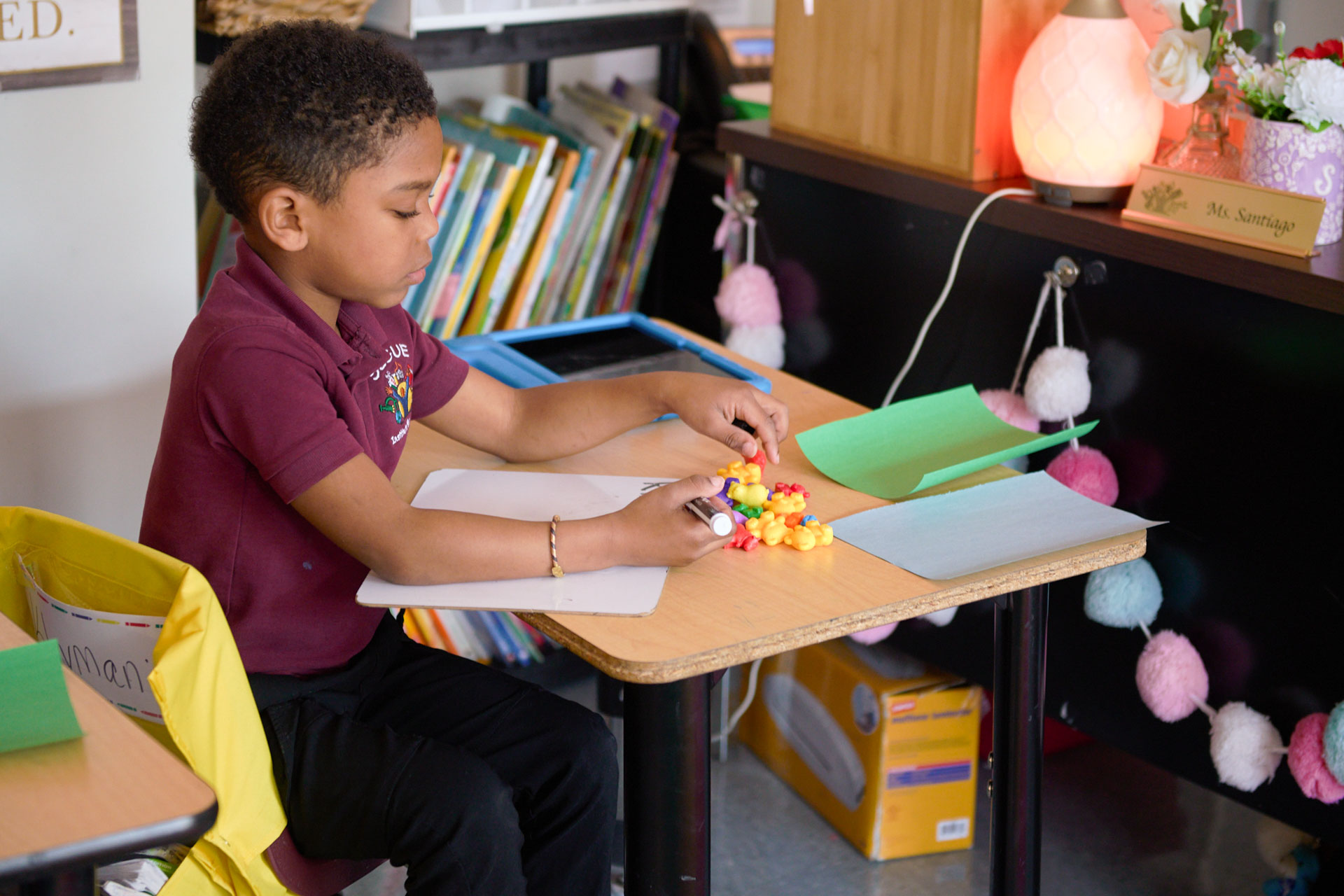As a special education teacher, I often encountered students who struggled with solving math problems. Many would simply add all the numbers they saw without grasping what the problems were actually asking.
To help, I introduced keywords like “all together” for addition and “difference” for subtraction.
However, this approach fell short when students focused solely on the keywords, missing the problem’s context. Today, elementary school teachers share similar struggles with their students.
The issue isn’t just about teaching math; it also involves addressing gaps in literacy. Reading skills are closely related to children’s ability to solve math problems. And, as much as early literacy development plays a critical role in developing problem-solving abilities, early numeracy strongly predicts overall academic success, including literacy development: Research has found that literacy and math development are intertwined.
Yet, pre-K teachers spend an average of only 2.5 percent of their day on numeracy skills — a gap that underscores the need for teaching approaches that bridge math and literacy.
Teachers must do more to help students build foundational cognitive skills, such as logic and reasoning.
Related: Our biweekly Early Childhood newsletter highlights innovative solutions to the obstacles facing the youngest students. Subscribe for free.
Integrated teaching can help students view math and English language arts as complementary disciplines that help them solve real-world problems. It could lead to better academic outcomes and a richer understanding of the world. Unfortunately, most elementary schools teach math and English language arts separately.
One way that teachers can address these comprehension gaps is to initially remove numbers from word problems and encourage students to read through the entire problems before they add or subtract. By solving “numberless word problems,” students can visualize and grasp the context before computing.
We can also use the power of storytelling. In my classroom, I incorporated engaging literature into math instruction to help my students better understand word problems. We used “Amanda Bean’s Amazing Dream,” a Marilyn Burns Brainy Day Book by Cindy Neuschwander, to explore multiplication concepts; the book’s illustrations helped students identify repeated addition and multiplication and allowed them to recognize similar scenarios in math problems. Incorporating math through storytelling helps children better understand and remember math concepts and also improves their confidence and reduces math anxiety. By building on the critical skills students need to excel in math and ELA, we can better equip them to apply math to real-world problems.
Here is what this approach encourages:
- Improved comprehension: Stories and real-world scenarios promote a better understanding of math concepts, making abstract ideas more accessible.
- Math visualization: Using descriptive writing and storytelling to explain math concepts, such as measurement and fractions, gives students a tangible reference for math principles as they exist in the world.
- Vocabulary development: Just as students learn new words in ELA, with math storytelling they learn math vocabulary to enhance their understanding of the math concepts needed to solve problems.
- Critical thinking skills: When students analyze problems from various perspectives and use language to describe them, they’re better equipped to apply problem-solving skills across disciplines.
- Contextualized problem-solving: By establishing context through literature, students are able to construct meaning to solve other problems.
Administrators should encourage training for teachers and provide resources that effectively blend math and ELA. Supporting a curriculum that encourages the teacher to be a facilitator — rather than a sage on a stage — will encourage more students to talk about math, draw upon their language skills and solve problems together.
Here are some approaches educators can use to blend instruction to challenge students and enhance math and ELA skills:
- Project-based learning: Assign hands-on projects that require mathematical analysis and language arts skills, such as reviewing datasets, creating infographics and writing interpretations.
- Collaborative learning environments: Ask groups of students to work together to solve complex problems that require mathematical reasoning and effective communication. Their work could include debates or reviews of written mathematical explanations.
- Literature-based mathematical discussions: Read books that incorporate mathematical themes or concepts and include a character who uses math to solve problems; such books can spark lively debate and serve as a springboard to discuss how math applies to real life.
These strategies strengthen the connection between math and ELA and promote deeper learning and engagement for all students.
Related: You probably don’t have your preschooler thinking about math enough
Using an integrated approach with literature also provides a level of comfort for teachers. Not surprisingly, most elementary school teachers didn’t choose their profession due to a deep love of mathematics — and some may suffer from math anxiety themselves. Teachers can model problem-solving beyond the classroom by expanding what it means to teach math through children’s books and hands-on activities.
Math instruction will only improve if administrators, educators, parents and policymakers push for integrated curricula. Doing so will not only help students’ math, but promote a more effective education system overall.
Thera Pearce is the learning services manager at ORIGO Education. She has experience in instructional design, curriculum consulting and professional development coordination. She has also worked as a special education teacher and coach for 15 years in North Carolina.
Contact the opinion editor at opinion@hechingerreport.org.
This story about early numeracy was produced by The Hechinger Report, a nonprofit, independent news organization focused on inequality and innovation in education. Sign up for Hechinger’s weekly newsletter.
Related articles
#TEACHER #VOICE #Heres #teachers #students #develop #logic #reasoning #skills #early
